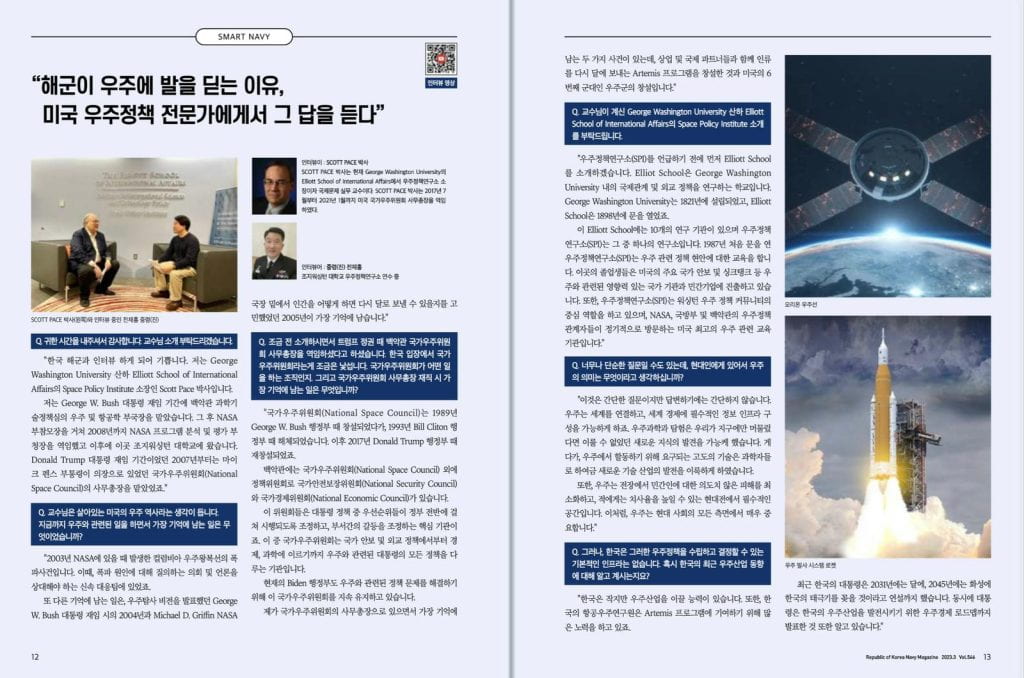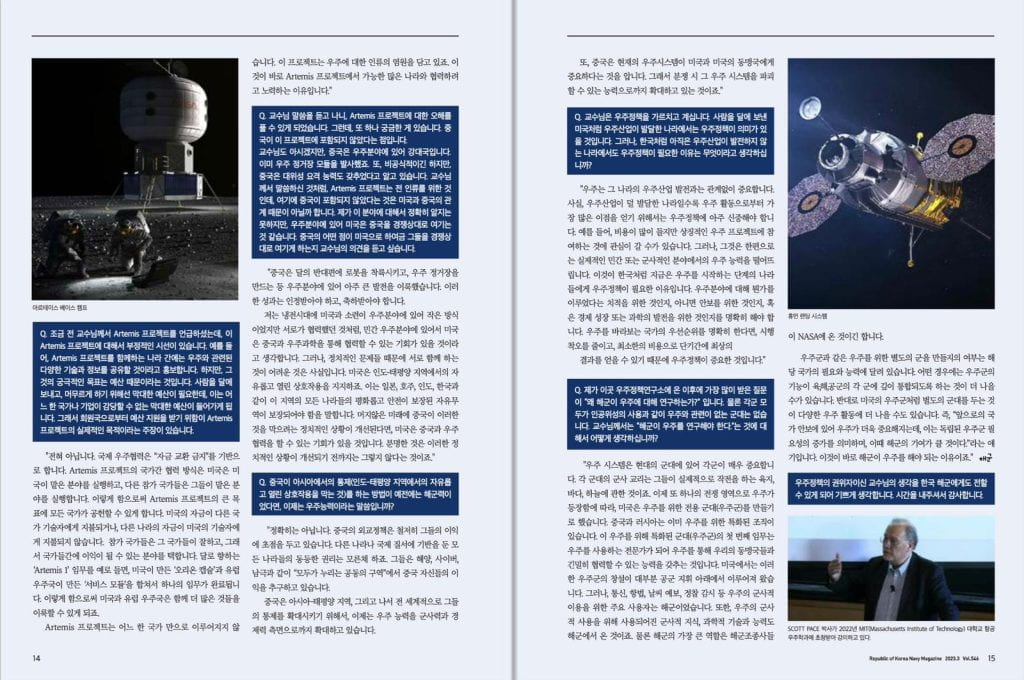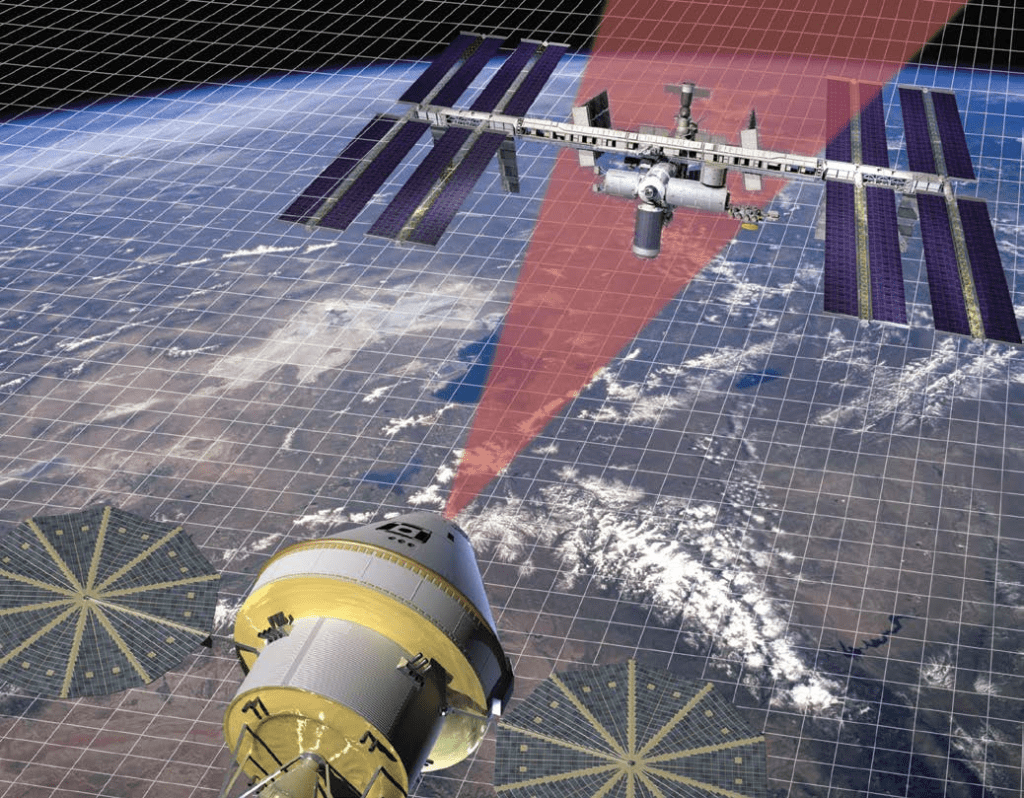2023 Thacher Prize Winners Announced
Congratulations to winner of the 2023 Thacher Prize for Outstanding Publication in Space Policy
Jonathan C. Clark won first prize for his paper: “Small Businesses in Space: Updates to Space-Related Small Business Procurement.” The paper has also been pubished in the Public Contract Law Journal.
Celine Der Boghosian, Megan Thompson, and Victoria Woodburn shared second place for their co-written paper: “A New Era of Space Collaboration: Mitigating Barriers to Cooperation Between Commercial and Government Space Actors.”
Shreya Lad won third prize for her paper: “SDI to Technological Sovereignty: The Evolution of Strategic Autonomy in Science and Technology Policy in France.”
Visiting Scholar Junji Miyazawa authors article on H3 launch vehicle failure.
SPI Visiting Scholar Junji Miyazawa authors article for Space Review:
A review of Japan’s space policy after the H3 launch vehicle failure.
SPI Visiting Scholar, Commander Jaehong Chun, Published in Republic of Korea Navy Magazine
Commander Jaehong Chun, an SPI Visiting Scholar from the Republic of Korea Navy, was featured in the Republic of Korea Navy Magazine regarding his work at SPI. The article can be accessed here and begins on page 12.


SPI Student, Elizabeth Anderson, Published in Q3 Edition of The Space Report 2022
SPI student Elizabeth Anderson was published in the Q3 edition of The Space Report 2022. Her article, Nation in Review: Bahrain, examines Bahrain’s ambitious space policy strategy in the context of Middle Eastern competition and regional partnerships.
The full Q3 edition of The Space Report 2022 is available here, and you can read a free version of her article below.
SPI congratulates Ms. Anderson on her first independent writing credit!

SPI Student, Benjamin Staats, Published in Astropolitics Journal — Examines Rendezvous and Proximity Operations in Space
SPI student Benjamin Staats was published in Astropolitics — The International Journal of Space Politics & Policy.
His article, Mitigating Security Risks and Potential Threats of Emerging Rendezvous and Proximity Operations, thoughtfully explores the hazards associated with increased peaceful space activities and the need to develop commensurate policies.
He examines regulating behavior and registration practices, expanding the space situational awareness network to partners, declassifying data to increase transparency, improving communication, and the need for a space assurance strategy with credible deterrence options.

Ben Statt’s Op-Ed premiered in the SpaceNews magazine
SPI student Ben Statt’s Op-Ed premiered in the SpaceNews magazine (June) and is now
online at https://spacenews.com/op-ed-
2022 Thacher Prize-winning paper by Laura Ratliff
Interested in space debris? Check out the 2022 Thacher Prize-winning paper by Laura Ratliff:
“Winning a seat at the table: Strategic routes by emerging powers to gain privileges in exclusive formal clubs” was published by the journal Contemporary Security Policy and authored by one of our esteemed non-resident scholars, Deganit Paikowsky.
“Winning a seat at the table: Strategic routes by emerging powers to gain privileges in exclusive formal clubs” was published by the journal Contemporary Security Policy and authored by one of our esteemed non-resident scholars, Deganit Paikowsky.
In this article, we focus on emerging powers that aspire to enjoy privileges enjoyed by established powers. These privileges vary in their level of institutionalization: full formal privileges, partial formal privileges, and informal privileges. We identify two alternative strategic routes through which emerging powers target these three types of privileges: a top-down and a bottom-up routes. We analyze two factors that impact the choice between these two routes: restrictiveness of eligibility criteria for winning privileges, and the expected levels of opposition by both established powers and outsiders. We examine the impact of these factors on two cases in which India negotiated privileges: India’s top-down campaign to win a permanent seat on the UN Security Council; and India’s bottom-up campaign to enter the nuclear club as a de facto nuclear weapon state. Highly restrictive eligibility criteria along with high levels of opposition drove India to gradually seek nuclear privileges through a bottom-up route.
It can be found here: https://www.tandfonline.com/doi/full/10.1080/13523260.2022.2074116
Makusu Tsuizaki authors article published by The Space Review. (Part 2 now available)
Don’t wait for a disaster: Industry-led space traffic management
-SPI’s Benjamin Staats has op-ed, Don’t wait for a disaster: Industry-led space traffic management, published by Space News. It can be found here: https://spacenews.com/op-ed-dont-wait-for-a-disaster-industry-led-space-traffic-management/
